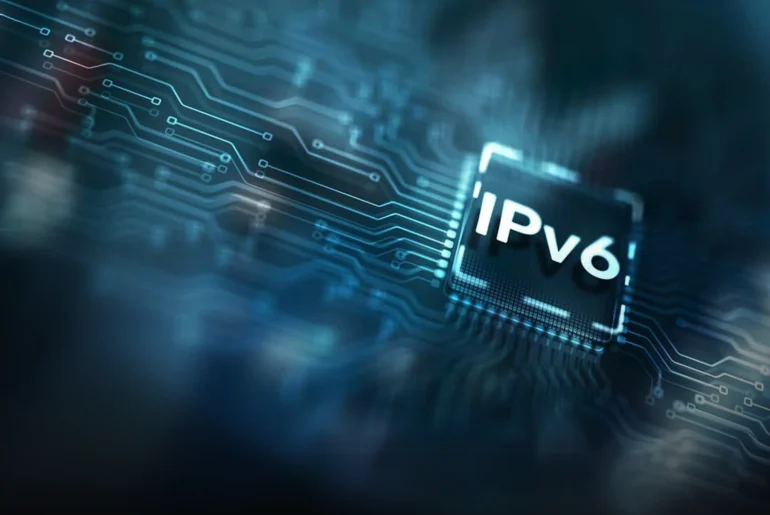In the rapidly evolving world of telecommunications, staying ahead of technological advancements is crucial for success. A key area of focus today is the global adoption of IPv6 — a topic that has significant implications for telecom companies worldwide. In this article, we dive deep into the importance of IPv4 to IPv6 adoption, exploring the benefits, challenges, and its impact on the future of the industry.

Vahan Hovsepyan, Senior Community and Public Policy Adviser at Ripe NCC, a leading expert in the field, will guide us through the intricacies of IPv6 and its global rollout, offering valuable insights on how telecom companies can navigate this transition.
With his extensive experience and expertise, Vahan will shed light on how they at Ripe NCC make IPv6 to drive innovation, scalability, and enhanced network performance, positioning companies for long-term success in an increasingly interconnected world.
IPv6 Adoption: The Global Significance and Challenges
Anastasia: Today, we’re diving into one of the key technologies that is shaping the future of the internet — and the world — IPv6. Joining me is my co-host, Lado, Aipix’s Business Development Director and our special guest today is Vahan Hovsepyan, Senior Community and Public Policy Adviser at Ripe NCC. Ripe NCC stands at the forefront of IPv6 adoption, and he has a wealth of knowledge to share with us.
Vahan: Thank you, Anastasia! It’s great to be here and discuss such an important topic.
Anastasia: Let’s kick things off with the big picture. Look at external factors that accelerate IPv6 adoption, what role do governmental regulations, economic incentives, and technological trends play?
Vahan: That’s a very relevant question. The role of government and regulations varies across countries. Some governments use regulatory means to push for IPv6 adoption. While others leverage “soft power” by requiring providers to support IPv6 in exchange for state contracts or other incentives. In certain countries, national strategies are being developed to encourage the transition. We also see that technological trends, such as the deployment of 5G, IoT, and AI, smart cities, VSaaS are pushing the industry to adopt newer internet standards like IPv6. These technologies demand more IP addresses and resources, which IPv6 can provide. Additionally, security concerns are driving the push for more secure networks, and IPv6 plays a key role in this.
Anastasia: That’s fascinating. So, how do major tech players like cloud providers and other technology companies influence IPv6 adoption?
Vahan: Tech giants like Amazon, Google, Microsoft, and others have already embraced IPv6 in their systems, which has been a game-changer. Their adoption is a major catalyst for local operators to follow suit. One of the past barriers was that operators would question the need to enable IPv6 when there were few services supporting it. Now, with the support from these major players, it’s clear that IPv6 adoption is not just a nice-to-have; it’s necessary for staying competitive. However, in regions like Central Asia and Middle Asia, there are still issues with legacy security systems and other outdated technologies that need to be upgraded to support IPv6. Vendors are beginning to understand that these outdated systems are holding back the transition and need to be replaced.
IPv4 to IPv6. Adoption Forecast
Anastasia: What’s your forecast for the complete transition from IPv4 to IPv6?
Vahan: Well, some people hope for a 100% transition, but realistically, that’s not going to happen in the near future. We don’t anticipate a full transition from IPv4 to IPv6 anytime soon. While networks and countries are adopting IPv6, IPv4 will continue to be used to ensure that resources are still available. However, the deployment of IPv6 is critical for future development and the growth of services and networks. For regions like Middle East, Central Asia, and Eastern Europe, the pace of adoption varies, but we are seeing positive growth, especially in places like Kazakhstan and Uzbekistan. However, challenges remain, particularly with outdated infrastructure and equipment that isn’t compatible with IPv6.
IPv4 to IPv6. Region Eye on the Adoption
Anastasia: How do these forecasts change in regions like Middle East, Central Asia, and Eastern Europe, where infrastructure and budgets are so different?
Vahan: In regions like Central Asia and Middle East, one of the major challenges is the existing infrastructure — especially older equipment that doesn’t support IPv6. This is particularly true for larger, often monopolistic operators who have already invested heavily in IPv4-based equipment. Upgrading this infrastructure requires significant resources. Another key challenge is ensuring that security systems and other critical infrastructure can comply with IPv6 standards. While there are definitely hurdles, we are seeing gradual progress, especially in countries like Uzbekistan and Kazakhstan. The providers here are making IPv6 a priority in their digital development strategies.
Anastasia: That’s fascinating. So, how do major tech players like cloud providers and other technology companies influence IPv6 adoption?
Vahan: Tech giants like Amazon, Google, Microsoft, and others have already embraced IPv6 in their systems, which has been a game-changer. Their adoption is a major catalyst for local operators to follow suit. One of the past barriers was that operators would question the need to enable IPv6 when there were few services supporting it. Now, with the support from these major players, it’s clear that IPv6 adoption is not just a nice-to-have; it’s necessary for staying competitive. However, in regions like Central Asia and Middle Asia, there are still issues with legacy security systems and other outdated technologies that need to be upgraded to support IPv6. Vendors are beginning to understand that these outdated systems are holding back the transition and need to be replaced.
IPv4 to IPv6 RIPE NCC Initiatives
Anastasia: Definitely, industry leaders have a huge role to play in driving the transition. Now, Vahan, let’s talk about the role of your organization, RIPE NCC. What initiatives do you have in place to help operators speed up their transition to IPv6?
Vahan: Ripe NCC plays a central role in supporting IPv6 adoption by working directly with network operators, governments, and regulators. We provide essential resources and information about the challenges and opportunities of implementing IPv6. Our organization offers a variety of initiatives, including events, webinars, and training programs. We provide free access to webinars and certification exams for industry professionals, which help strengthen their knowledge and career prospects. Additionally, we use tools like our IPv6 Atlas to monitor deployment and share findings with the industry. Our goal is to ensure that IPv6 adoption is a smooth and coordinated process, especially in regions where governmental support is crucial.
Lado: Can we dive a bit into my favorite regions like Central Asia and MENA? When we speak about the IPv6 initiatives, do you have any special initiatives for these regions? And you mentioned that, it’s very important to have support from governments. So do you have any successful cases how do governments in these regions support IPv6 adoption?
Vahan: Yes, I have already mentioned the creation of IPv6 councils, where the main role is played by the governments. In Uzbekistan and Kazakhstan, there are already IPv6 councils, where the head of the IPv6 council is a deputy minister, I believe, and other industrial organizations are also supporting these activities. For Uzbekistan, we’ve also created an MOU (Memorandum of Understanding) where we’ve outlined different activities to support technological and telecommunication development, including the adoption of IPv6. Based on this MOU, we’ve implemented several activities, such as creating an action plan for IPv6 development, and working with one of the monopoly operators, UzbekTelecom.
We’ve provided tailored training for them and the leading mobile operators, helping them understand their current infrastructure and advising on improvements. There was a special focus on this in Uzbekistan. We’re also in the process of drafting an MOU with KyrgyzTelecom and the Ministry of Communications in Kyrgyzstan, which we hope will be signed soon. We’ve also joined the IPv6 Council of Kazakhstan, and we’re preparing another MOU with them to provide dedicated resources. We don’t work only in Central Asia or the CIS. We have an MOU with Georgia’s regulator, GNCC, where we’ve been supporting activities related to IPv6 adoption. We’re also active in the Middle East, where we’ve joined the IPv6 Council and worked with IGU and other industrial stakeholders, such as ITU, ISO, and ICON.
Recently, we even went to Moldova, and in June, we’ll be participating in RIPE NCC Days, one of the key events where we’ll engage with both governments and companies to discuss IPv6 adoption.
IPv6 Adoption: The Telecom Operators Shifts
Anastasia: That’s interesting. So, after widespread IPv6 adoption, how do you see the evolution of telecom and internet infrastructure? What changes can we expect?
Vahan: That’s quite an interesting question. IPv6 deployment isn’t just about shifting from an older technology to a new one. It’s about creating a competitive advantage for countries in their digital developments. After IPv6 deployment, we will see more services evolving, like SRv6, which provides additional benefits. States could also create economic incentives to help finance the transition. IoT development will be huge, with IPv6 enabling more connectivity and opportunities for software companies to create products based on. It’s the foundation for the future of telecom development, leading to a wide range of possibilities for new services. IPv6 adoption will certainly drive digital transformation, opening doors for more efficient and diverse telecom infrastructure.
Lado: Do you think IPv6 can make the internet less centralized, especially in terms of traffic management or peer-to-peer networks?
Vahan: IPv6 adoption could indeed make the internet less centralized. Currently, providers use equipment that allows sharing one IPv4 address among many customers. With IPv6, each customer and even each device can have a unique IPv6 address. This reduces the need for shared infrastructure and makes it less centralized. However, as I mentioned, the internet is already decentralized, and IPv6 adoption will just push it further in that direction. The technology is a technical shift that enhances network capabilities without necessarily changing the political or policy landscape. It makes networks more effective and competitive, benefiting both governments and providers.
Lado: Interesting. You’ve mentioned smart cities earlier. Can smart cities be a catalyst for IPv6 adoption?
Vahan: Absolutely. If a country wants to succeed in the digital era, it must prioritize the development of networks that support digitalization efforts, such as smart cities, IoT, and 5G coverage. Smart cities require vast internet resources, and without IPv6, it’s nearly impossible to provide the necessary infrastructure. Think of all the devices and sensors in smart cities —they need IPv6 addresses to function properly. Without IPv6, it’s simply not feasible to support the digital transformation required for smart cities, telemedicine, and IoT networks.
IPv6 Adoption: Cases of Initiative Cooperation
Anastasia: Can you give us some interesting details or case studies from Central Asia or the Middle East?
Vahan: Sure! One of our flagship activities in Central Asia is the creation of the Central Asia Peering and Interconnection Forum (CAPIF). The registration for CAPIF 4 2025 is now opened. This event helps providers in Central Asia and neighboring countries improve their peering and interconnection, as well as adoption of IPv6. Central Asia is landlocked, and it’s challenging for them to establish redundant internet connections to the rest of the world, due to geopolitical and historical factors. That’s why we’ve been supporting their efforts, helping them find alternative ways to improve international connectivity. We’ve also supported the Kazakhstan Network Operators Group, which is very proactive and hosts its own conference. We’re involved in several regional events and are working closely with key stakeholders from Central Asia, Caucasus, and even Iran, which plays a pivotal role in enhancing regional connectivity.
Anastasia: There are certainly obstacles in the way of IPv6 adoption. What do you consider to be the most significant challenges?
Vahan: The main challenges are a combination of factors, including financial constraints and the need for investment in telecommunications infrastructure. Many companies still hold large IPv4 allocations, which creates resistance to transition. There’s also a shortage of specialists and knowledge in some regions. But the most significant obstacle is the lack of awareness and understanding of the importance of IPv6. Governments need to recognize that without IPv6 deployment, they cannot fully support the digital services they want to offer. This includes telemedicine, smart cities, and IoT networks. We can help by providing training and technical support to overcome these challenges.
IPv6 Adoption: Training Activities
Lado: So, what initiatives does RIPE NCC provide to help with this transition, such as financial or technical support? Beyond supporting operators, does RIPE NCC provide financial or technical support, training programs, labs, test environments, or joint projects with regulators?
Vahan: RIPE NCC offers a wide range of support to our members and the broader RIPECommunity. We help organize regional events, such as the Central Asia Peering Forum and Middle East Network Operators Group. Our company also organizes activities like the Internet Measurement Day, which we do in collaboration with ICON and other stakeholders. Ripe NCC provides a platform called RIPE Labs, where research articles and industrial development topics are shared. Additionally, we plan to continue supporting network operator groups and enhancing cooperation with state bodies to help them transition to IPv6. Our initiatives also include localized research, professional certifications, and the creation of test environments and labs.
Anastasia: It’s great to hear about all the initiatives RIPE NCC is involved in. This kind of support is invaluable to the industry. Vahan, thank you so much for sharing your insights today.
Vahan: It was my pleasure. Thank you for having me!
IPv4 to IPv6. Conclusion
As the world transitions to IPv6 and video surveillance technologies become integral to security and service enhancement, the power of collaboration and strategic partnerships has never been clearer. By joining forces with industry bodies and global initiatives, companies have the unique opportunity to innovate, elevate their security offerings, and stay ahead in an ever-changing market.
Aipix stands as a key partner in this journey, helping businesses harness the potential of next-gen technologies. Let’s embrace the future of cooperation — where collective efforts drive smarter, safer, and more connected solutions for all.
Let’s embrace the future together — where innovation, security, and connectivity make life safer and smarter!





